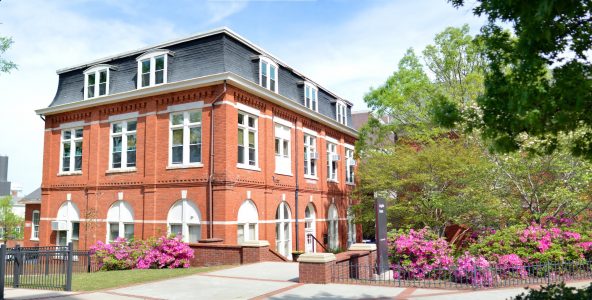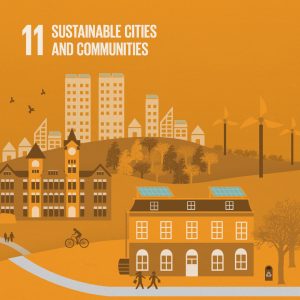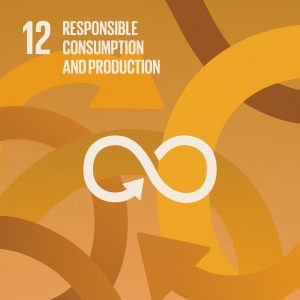by Becki Retzlaff
Auburn University is home to some excellent examples of green buildings, and Auburn has made commitments to purchasing sustainable equipment and construction materials for new buildings. One fine example of such a building is the new Jay and Susie Gouge Performing Arts Center, which is certified by LEED at the Gold level. Gold LEED rating is an impressive accomplishment for such a large building. Auburn purchased local and recyclable materials for construction and used high efficiency fixtures and equipment in the building. The sustainable features in the Gouge Center make it a great example of how Auburn is making sustainable purchasing and construction decisions.
 What about the older buildings on campus? Can old, treasured buildings such as Comer Hall, Samford Hall, Langdon Hall, and Langdon Annex be sustainable, or are we stuck with poorly performing and unsustainable buildings in the name of historic preservation?
What about the older buildings on campus? Can old, treasured buildings such as Comer Hall, Samford Hall, Langdon Hall, and Langdon Annex be sustainable, or are we stuck with poorly performing and unsustainable buildings in the name of historic preservation?
Historic preservationists like to point out that the greenest building is one that is already built. To consider the sustainability of older buildings, we must make the distinction between embodied energy and operational energy. Embodied energy is the amount of energy required to construct a building and transport materials to a site. When we demolish a building, we lose all its embodied energy, plus we use more energy for demolition and increase waste and transportation. Operational energy is the amount energy that goes into the day-to-day operation of a building. Older buildings are great at embodied energy, but often less great at operational energy (although they can be improved).
Sustainability decisions are often about taking a long view, such as making purchasing decisions toward things that will last a long time, so they don’t end up in a landfill or need to be replaced. If we take a long view of sustainability, we can view Langdon Hall, the oldest building on campus, as an excellent example of sustainable construction and purchasing. It has lasted 176 years! Considering that the typical lifespan of a building is around 30 years, Langdon Hall has outlived six buildings, and has avoided six buildings worth of construction waste from being sent to landfalls. It has also saved six new replacement buildings from having to be built, and all the potential materials and energy that would have gone into construction of those buildings had Langdon been demolished 30 years after it was constructed.
Old buildings like Langdon Hall also contain traditional green wisdom that has evolved over centuries, and informed building efficiency. Wide eaves can shade indoor spaces from the hot Alabama sun, and operable windows can be opened to allow indoor spaces to cool without using air conditioning. How a building is situated on a lot and the placement of windows can take advantage of the sun for heating and cooling.
I hope the Gouge Center and other new LEED certified buildings on campus last as long as buildings like Langdon Hall, making all of the energy that went into constructing them even more sustainable. Maybe someday they will become one of our historic and sustainable treasures like Langdon Hall.
Becki Retzlaff is the Director of Auburn University’s Academic Sustainability Program.
Learn about the SDGs & AU and our contributions related to this post.






